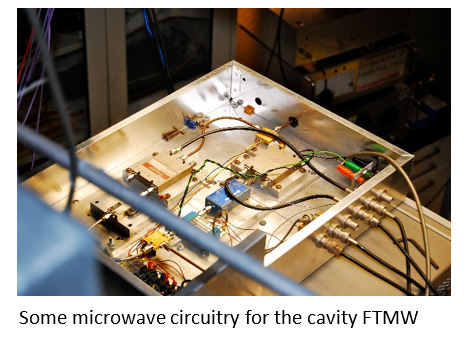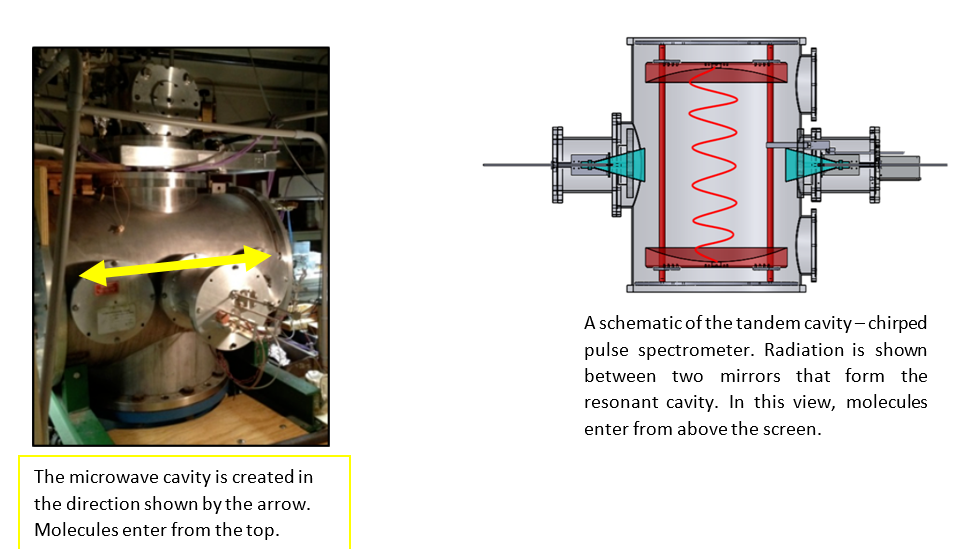Since the mid 1990s, we have been using the pulsed-nozzle Fourier transform microwave (FTMW) technique as a sensitive means of obtaining the rotational spectra of molecules and complexes. Species that are produced in a supersonic jet are introduced into a resonant microwave cavity, where they are subject to a short, bright burst of microwave radiation.
The short duration of the pulse and the bandwidth of the cavity conspire to ensure that the spectral bandwidth of the radiation is about 1 MHz and molecules with transition frequencies anywhere within this bandwidth are coherently excited. In effect, the molecules have chosen their absorption frequencies from the range specified by the bandwidth. When the excitation pulse is turned off, the molecules emit their characteristic frequencies. We detect this emission using heterodyne techniques, digitize the signal, and Fourier transform to produce a spectrum in the frequency domain. Some of the microwave electronics used to do this are shown at the right.

Although far less direct than a simple Beer’s law – type absorption experiment, this methodology turns out to afford enormous sensitivity and resolution. In the latter regard, we are typically able to measure microwave absorption frequencies to a part in 107 or 108!
